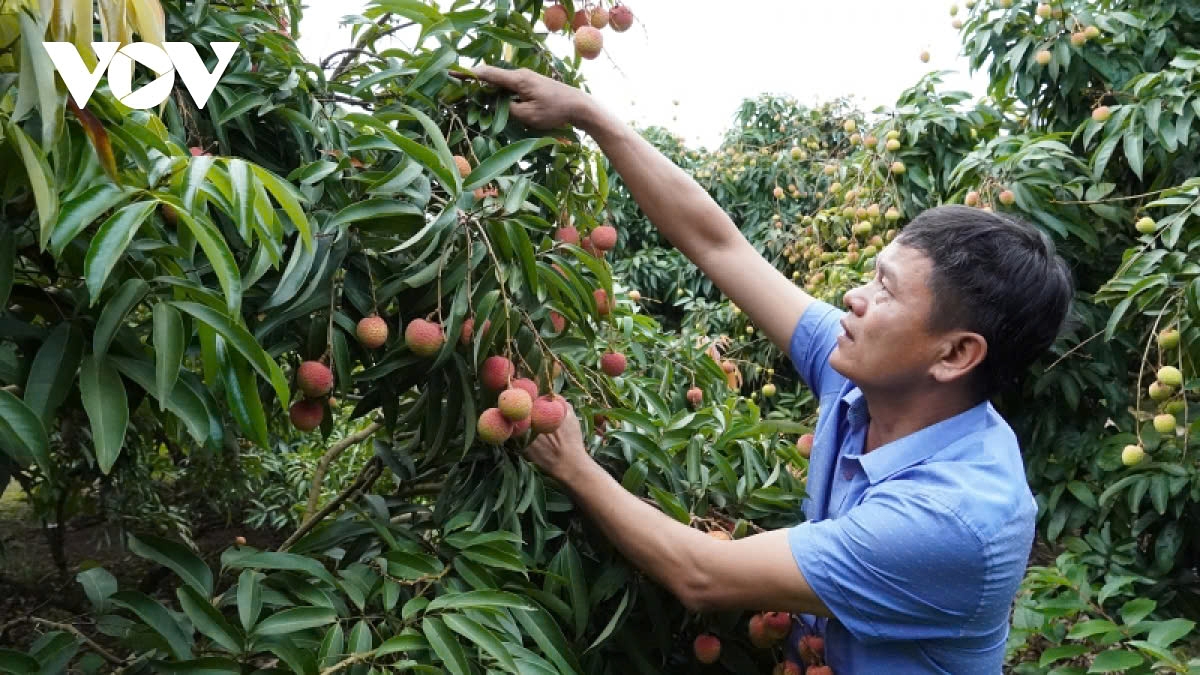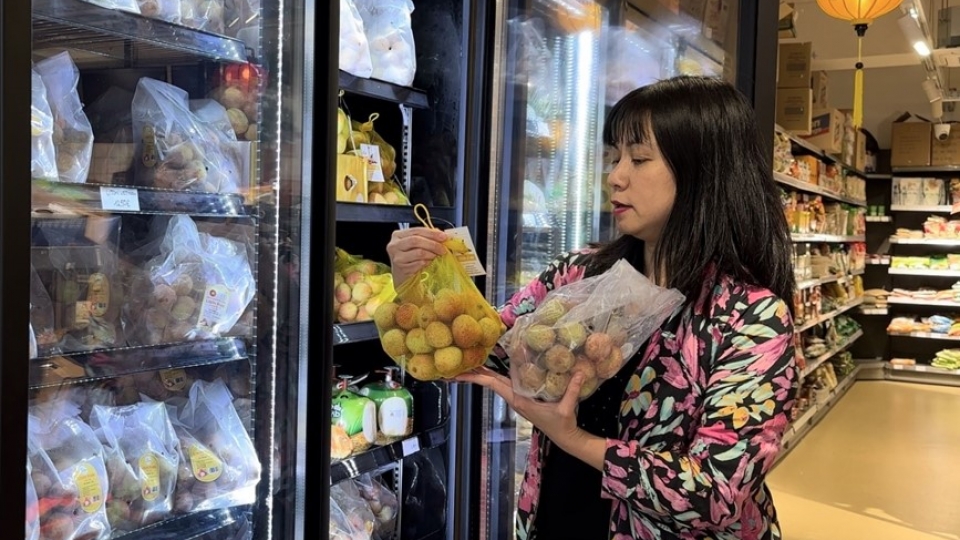Lychee growing localities anticipate bumper harvest, work out export plan
VOV.VN - Lychee growing localities nationwide are anticipating a bumper harvest for the 2025 lychee season, with an estimated output of over 303,000 tonnes, an increase of about 30% compared to 2024, reports the Ministry of Agriculture and Environment (MoAE).

A bumper harvest anticipated
Bac Giang, which has the largest farming area under lychee cultivation, is expected to produce about 165,000 tonnes, followed by Hai Duong 60,000 tonnes, Hung Yen 22,000 tonnes, Lang Son 22,000 tonnes, and Dak Lak 21,000 tonnes.
To ensure a successful lychee season, the Department of Crop Production and Plant Protection under the MoAE says that it has provided early guidance for the crop, including technical instructions on cultivation and pest control. Food safety supervision has also been strengthened, with inspections conducted to monitor pesticide and heavy metal residues on the fruit.
Currently, 469 planting area codes and 55 packaging facility codes have been licensed to serve export markets such as China, Australia, Thailand, Japan, and the United States. These areas are under strict supervision and are fully prepared for the 2025 season.
According to the department, the majority of lychee output (approx. 97%) is consumed fresh, while only around 3% is deeply processed into products like juice, frozen lychee, or canned fruit. Drying facilities and processing enterprises have completed their preparations and are ready for the harvest. Plant quarantine measures have also been strengthened, with three irradiation facilities and three fumigation centres approved by importing countries.
Notably, starting from the 2025 season, Japan has authorised Vietnam to self-monitor the treatment process, instead of sending experts for direct supervision. The change helps reduce time and costs for both farmers and businesses.
A fruitful harvest for Bac Giang
In 2025, Bac Giang is cultivating approximately 29,700 hectares of lychee, including 8,000 hectares of early-season varieties. The fruit is currently in the development stage with a fruit-setting rate over 80%, and the total harvest is projected to exceed 165,000 tonnes.
During a field trip to Bac Giang on May 11, MoAE Do Duc Duy requested that the province strictly monitor weather, pests and food safety; work out a flexible and realistic sales strategy; and expand distribution channels. Accordingly, he suggested, the province adopt a dual-market approach, combining strong domestic distribution with expanded export outreach, alongside modernising sales methods to meet rising consumer expectations.
Emphasising that logistics and post-harvest preservation are the key elements that determine the competitiveness of lychees, the minister recommended that Bac Giang collaborate with enterprises to invest in cold storage facilities and on-site pre-processing centres, aimed at minimising post-harvest losses and extending product shelf life, particularly for export markets.
According to local authorities, to enhance market access and export potential, the province is launching a series of trade promotion initiatives, including hosting a lychee trade and OCOP (One Commune One Product) product promotion conference in 2025; and organising a lychee and key agricultural product week in Ho Chi Minh City and southern provinces.
It has planned to send a trade delegation to the China-ASEAN Import-Export Commodities Fair in Pingxiang, Guangxi (China), and conduct trade promotion events in European markets.
While China remains a traditional market with long-standing trade relations, Bac Giang is also placing strong emphasis on expanding exports to emerging and high-potential markets such as the United States, the European Union, Japan, the Republic of Korea, Australia, Malaysia, the United Arab Emirates, Singapore, the Middle East, Thailand, and Canada.




